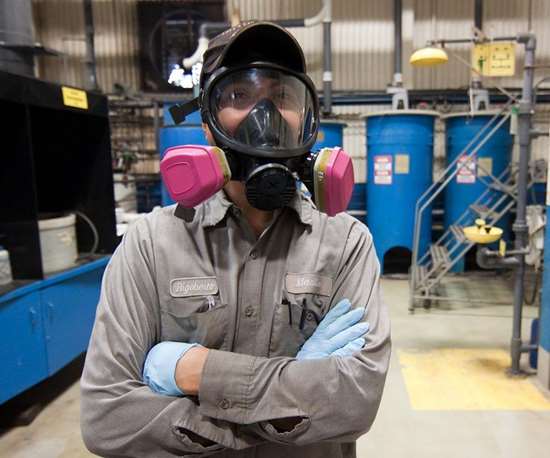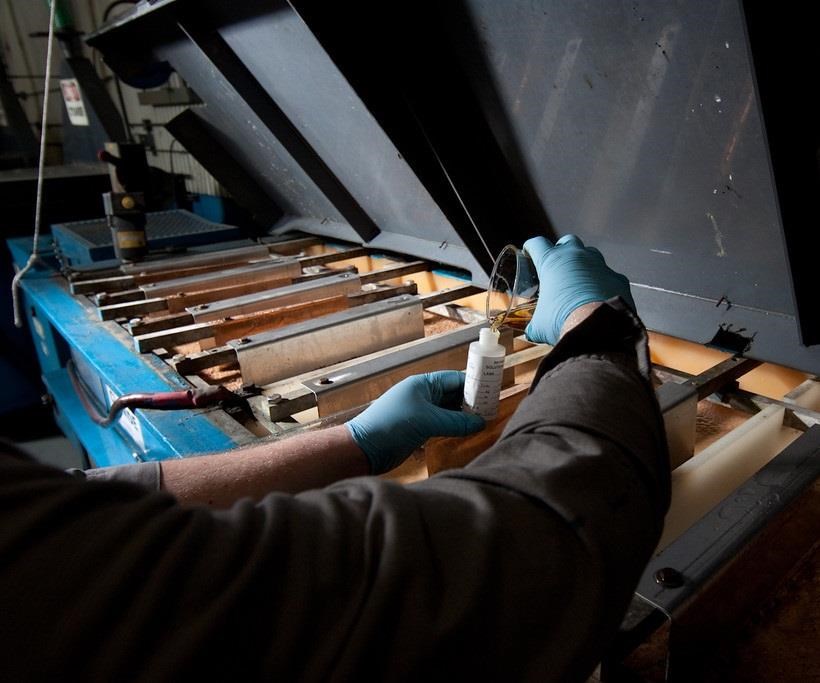Is Your Electroplating Waste Hazardous?
Some that bears precious metals is, and there are a host of regulations to consider when recycling.
#sustainability #pollution control #basics
Processing of hazardous waste that contains precious metals is a challenge and responsibility that many electroplating companies face. Cyanide- and acid-based solutions, and materials such as plating bath filters and resins, all have the potential to cause injury and harm to our environment if not disposed of properly.
Many companies may not realize that they are liable for how their precious-metal-bearing waste is handled and, ultimately, for the repercussions if a spill or similar incident were to occur. Because of the inherent risks associated with the processing of hazardous waste, a comprehensive processing plan is essential to protect the environment and individuals handling the materials, and to avoid potential fines or lawsuits.
Featured Content
In accordance with the Resource Conservation and Recovery Act (RCRA), the U.S. Environmental Protection Agency has established a set of regulations for handling hazardous waste from the time it is generated through disposal. These regulations can help companies determine if their precious-metal-bearing wastes are hazardous, and how to properly handle, transport and dispose of these materials.
What Makes Waste Hazardous?
According to the EPA, hazardous waste is defined as “a waste with properties that make it dangerous or potentially harmful to human health or the environment.”
To ensure that the proper steps are taken when transporting and recycling precious-metal-bearing hazardous waste, the generating companies should declare if the scrap materials they are sending to a precious metals recycler are, in fact, hazardous, and, if so, to what extent. Gold and silver cyanide solutions, as well as platinum group acid solutions are considered hazardous by default. Other materials, such as precious-metal-bearing filters, sludges or resins, should be evaluated using a range of criteria. Ultimately, the determination is subjective, but suppliers should seriously consider the risks associated with declaring their waste non-hazardous.
To determine if precious-metal-bearing electroplating waste is hazardous, the following characteristics, as defined by the EPA, should be considered:
Ignitability. Ignitable materials can create fires or spontaneously combust, or have a flash point of less than 60°C.
Corrosivity. Corrosive materials refer to acids or bases with a pH level of less than or equal to 2, or greater than or equal to 12.5 that have the ability to corrode a metal container.
Reactivity. Reactive materials create explosions, toxic fumes, gases or vapors when heated, compressed or mixed with water.
Toxicity. Toxic materials are harmful or fatal if swallowed or put in contact with skin, and can pollute groundwater if disposed of on land.
More in-depth definitions of these characteristics can be found in “Title 40: Protection of the Environment” of the U.S. Code of Federal Regulations.
In addition to determining if the waste has hazardous characteristics, the generator must determine if it is a “listed” waste, meaning it falls into one of four categories of hazardous wastes established by the EPA. If the waste meets a listing description, it is considered a listed hazardous waste, even if it does not contain any of the hazardous characteristics outlined above.
Based on the outcome of this evaluation, suppliers should then be able to declare their waste as either hazardous or non-hazardous. This determination will influence how, when and by whom the waste will be transported from facility to precious metals recycler, and how that company will recycle the precious metals and properly dispose of the remaining waste. Precious-metal-bearing plating media, danglers, plated parts and cathodes are considered non-hazardous.
Choosing the Right Recycling Partner
One of the most important aspects of any hazardous waste processing plan is choosing the right recycling partner. Because businesses generating the waste are ultimately held accountable for its transportation and processing, it is important to select partners that not only satisfy EPA, OSHA and state regulations, but who can also ensure that the waste is transported and disposed of properly.
A trustworthy recycling company should work with the plater to develop a comprehensive plan, including consultation with its in-house environmental, health and safety manager. This plan can range from helping to determine if the waste is hazardous to transportation to final materials processing. Willingness to go above and beyond ensures that both parties are on the same page and working together to establish a plan that limits liability for both companies.
Scrap Profile Sheets
Many states have laws that require hazardous waste recycling and processing companies to maintain scrap profile sheets for each supplier and each type of precious metals scrap sent to their facilities. These sheets detail the type of scrap and its origins, and the suppliers’ analysis of the ignitability, corrosivity, reactivity and toxicity of their waste materials. By requiring these scrap profile sheets, the recycler is not only complying with state and federal regulations, it is creating a dialogue with the supplier that ensures that both companies fully understand the type of precious-metal-bearing hazardous waste being transported and processed.
Hazardous Waste Transportation
Hazardous waste, whether liquid or solid, must be properly transported from its point of generation to the processing facility. The transportation company should be a licensed hazardous waste hauler, which means that proper vehicles and safety measures are in place to prevent spills
The precious metals recycling partner should provide its own hazardous waste vehicle or have a trusted partner that can transport the waste on its behalf. Access to licensed transportation resources demonstrates the company’s commitment to a safe recycling process from start to finish and adds a layer of customer service to make the recycling process seamless.
Note that the transportation provider should be specifically licensed to handle “hazardous waste.” “Hazardous materials” do not require the same level of security and safety measures, and this designation is not sufficient. Be sure of this distinction to ensure limited liability.
As mentioned previously, it is important to understand that, while the transportation company may physically be in possession of the hazardous waste, the plater is still ultimately responsible for the materials making it safely to their destination. Working with a company that has taken the proper steps to ensure the waste is transported in a safe manner will greatly reduce the chances of an accident or spill. In addition, by scheduling transportation through such a partner, a plater can often reap the benefits of negotiated transportation rates.
Transparency and Environmental Controls
Processing of precious-metal-bearing hazardous waste is the last step in a recycling plan. Because of the threats to human health and the environment, hazardous waste cannot just be thrown away. A reliable partner should have the proper controls in place to recycle the precious metals and to break down the hazardous waste into environmentally safe substances.
In addition, the recycler should be willing to grant access to information about the industrial history of its facility, and any applicable documentation certifying its compliance with EPA, OSHA and state regulations. Transparency in hazardous waste processing is key to selecting a recycler and establishing a long-term, mutually beneficial partnership.
Limiting Liability
Recycling precious-metal-bearing hazardous waste is a responsibility that all electroplating companies should look at comprehensively. By properly determining whether materials are hazardous, selecting a reliable partner and establishing a recycling plan, a plater can limit liability, and protect the environment and the individuals handling the materials.
Luis Marini is the marketing manager for Metallix Refining Inc. For more information, visit metallixrefining.com or call 800-327-7938.
RELATED CONTENT
-
Fixing Corrosion Between Anodized Aluminum and Steel
Anne Deacon Juhl, Ph.D., with AluConsult, says Galvanic corrosion is due to an electrical contact with a more noble metal or a nonmetallic conductor in a conductive environment.
-
Aluminum Surface Finishing Corrosion Causes and Troubleshooting
In this paper, a review of several process solutions, examining coolants, solvent cleaning, alkaline clean/etch and deoxidizing/desmutting, listing intended and unintended chemical reactions along with possible mechanisms that would favor corrosion formation.
-
Zinc Electroplating
Choosing the best process for your operation.






















